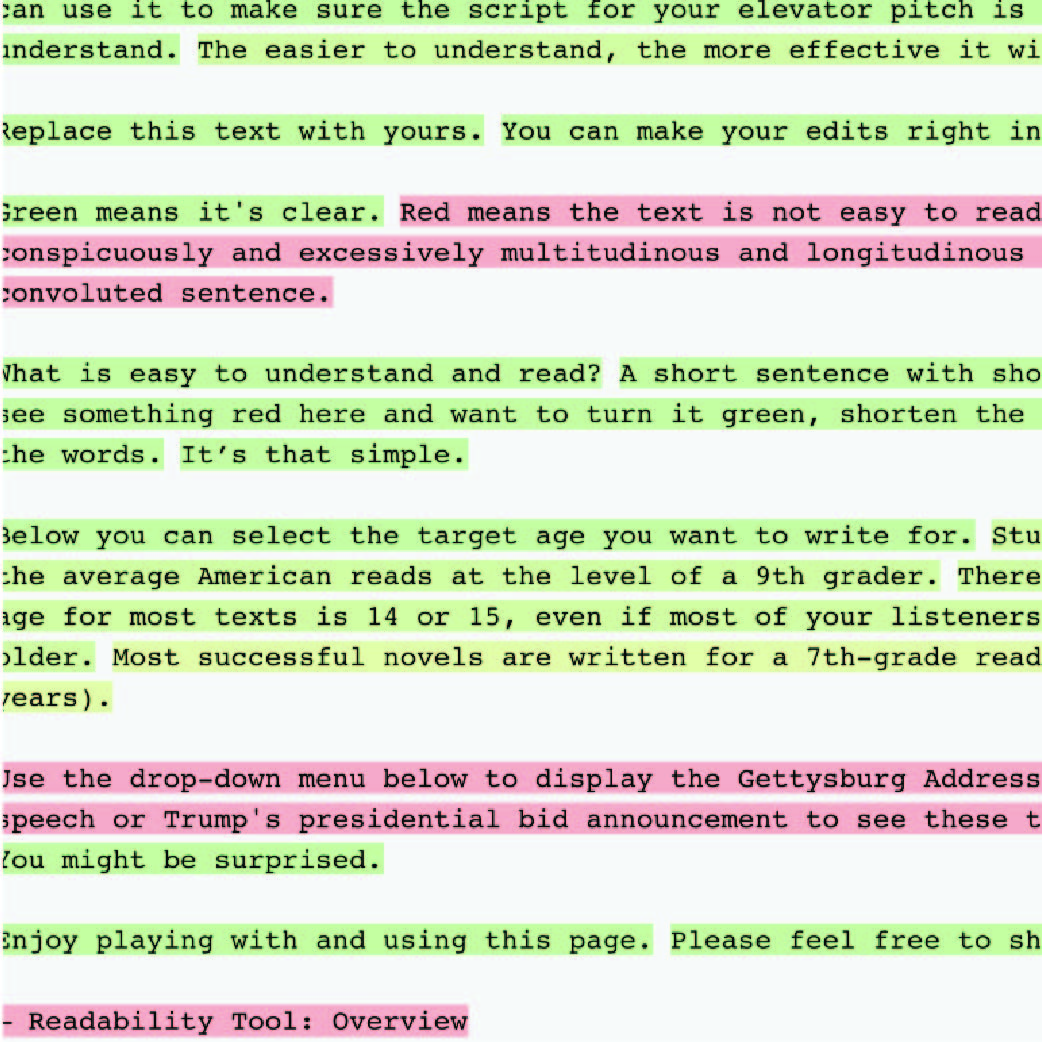Dear friends,
I hope this finds you well. I’m sending this “Quarterly Update” to all Elevator Speech Trainees to share tricks and resources you might find helpful. If you prefer not to receive these once-every-three-months updates, please click the one-click unsubscribe link at the bottom of this email.
Happy New Year
My German grandmother Martha always used to say “Alle Wuensche werden klein gegen den gesund zu sein.” Translated this means: “All wishes become small compared to the one for good health.” In this spirit, I’m sending you a big wish for good health and happiness in 2020.
New Readability Tool
Please check out our new readability analyzer. It’s at www.elevatorspeechtraining.
You can also select the reading grade level against which the text is analyzed. Studies have shown that the average American reads at the level of a 9th grader. Therefore, a good target age for most texts is 14 or 15, even if most of your listeners or readers are educated professionals and older. Most successful novels are written for a 7th-grade reading level (i.e., 13 years).
The tool also includes a drop-down menu to display the Gettysburg Address, Obama’s farewell speech, or Trump’s presidential bid announcement, among others, to easily compare these texts’ readability. You might be surprised.
You can use this tool to make sure the script for an elevator pitch is easy to understand. But of course, it also works for other texts. Personally, I use a combination of tools on every text that I want to be up to snuff. They are Microsoft Word’s spell checker, Grammarly.com and the Readability Analyzer.
I hope you found this update useful.
All the best,
Marc.


